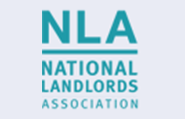Free Evictions
Free Evictions
We at Uk Housing Group will help you evict a sitting tenant who is not paying any rent for FREE as long we get to manage that unit once the client has been evicted.
Eviction Process Worksheet basics
If you’re a landlord, evicting a tenant is sometimes necessary. You can use an Eviction Process Worksheet to help make the process easier. With this document you can gather the necessary information so that you can evict a tenant while helping ensure that that both your rights, and his or her rights, are protected.
Use the Eviction Process Worksheet document if:
· You need to evict a tenant.
· A tenant hasn’t been following the rental agreement, and you think an eviction might be coming up.
· You’re a property manager.
· You regularly lease properties and want to be prepared for possible evictions.
An Eviction Process Worksheet helps you get the eviction process started the right way. It provides a checklist of things to do, and items to review, when you are preparing to evict a tenant, and can cover a range of different scenarios. You can compile information which can include the following: a review of the lease provisions; violations of the rental agreement; the amount of unpaid rent; the number of days that the tenant has stayed in the rental property beyond the end of the lease; receipts regarding clean-up costs of the rental property; the amount of damage to the rental property; a list of photographs of the damages; estimates concerning the repair of the damages; a list of witnesses who have knowledge of an incident that is cause for eviction; and a list of written statements or recorded statements from potential witnesses.
What is a section 21 (“s21”) notice?
It is a method of ending an assured shorthold tenancy by giving two months’ notice. The advantage of a s21 notice over other types of notice is that a Landlord does not have to give a reason for requiring possession.
What requirements must be met?
There are numerous requirements to satisfy to serve a valid s21 notice which makes it very easy for one condition to be overlooked. Although the provisions of the Deregulation Act 2015 (“DA 2015”) have been in place for a few years, it is only recently that the court forms have caught up with the requirements. It is possible that, up until now, landlords have not been held to proof and it is therefore useful to remind ourselves of all the steps landlords must take at commencement and throughout the lifetime of the tenancy.
By s37 DA 2015 for an Assured Shorthold Tenancy (“AST”) granted after 1 October 2015 there is now a prescribed form of s21 notice, which is form 6A, found in Schedule 1 to the Assured Tenancies and Agricultural Occupancies (Forms) (England) Regulations 2015. For ASTs granted before 1 October 2015 there is no prescribed form of a s21 notice, although it is open to landlords to use the 6A notice. Although pre- October 2015 ASTs do not need to comply with the requirements of the 6A notice landlords may still wish to use the form 6A as, although more convoluted than a traditional s21 notice, if completed properly, it will minimise the risk of a technical defence being taken at court (although, from 1 October 2018 all landlords must use this notice).
Before serving a s21 notice, it is essential that landlords have satisfied the following:
1. Energy Performance Certificate
The wording of the The Assured Shorthold Tenancy Notices and Prescribed Requirements (England) Regulations 2015 (“the Regulations”) is somewhat ambiguous, but on my reading, a landlord must provide a valid EPC (free of charge) to the tenant before the tenancy commences. Failure to do so could be an absolute defence to a s21 notice.
Given that the DA 2015 should be coming back into focus, as in October 2018 certain parts of the DA 2015 will now apply to all AST’s (even those that commenced prior to 1 October 2015 – see further below), I would hope that this irregularity is addressed in new regulations, otherwise landlords and tenants alike are going to continue to be in the dark as to exactly what is required.
2. Gas Safety Certificate
This must be provided at the commencement of the tenancy, and a valid gas safety certificate must be in place throughout the tenancy. If a landlord fails to provide a tenant with a gas safety certificate before they take up occupation, it is a defect that cannot be resolved and therefore it may be an absolute defence to a s21 notice.
This raises the question whether failure to serve the EPC and Gas Safety Certificate at the outset of the tenancy, can be rescued by a later certificate? If the failure cannot be remedied, then a s21 notice cannot be relied upon and the effect would be to give the tenant full security of tenure – surely this cannot be the intention behind the Regulations? However, on a literal reading, this seems to be exactly what it says.
Unfortunately, there are no binding decisions on this point and I expect that such a defence will continue to be raised by tenants until a case reaches the higher courts. For landlords that are already in breach of the requirements, the best course of action would be to regularise matters before serving the s21 notice, but to anticipate this argument might be raised by the tenant – at this stage, it will be to the discretion of the District Judge.
3. A ‘How to Rent: a checklist for renting in England’ booklet
The Regulations specifically state that landlords must provide a document entitled ‘How to rent: the checklist for renting in England’, as published by the Department for Communities and Local Government, that has effect for the time being. However this requirement does not apply to social landlords.
In a previous version of this article I noted the importance of ensuring that the correct Booklet was provided to the tenant. On 26 June 2011 MHCLG issued a new guide, entitled “How to Rent – A guide for current and prospective tenants in the private rented sector in England.”
However, the Regulations are very specific and state that landlords must provide a “document entitled ‘How to rent: the checklist for renting in England’, as published by the Department for Communities and Local Government, that has effect for the time being”.
On becoming aware of this issue MHCLG updated the booklet (seemingly on 10 July 2018) to the correct name (‘How to Rent: a checklist for renting in England’) but their website still states that the guide is from 26 June 2018. However, what will happen to those landlords who provided the ‘original’ edition that was available on the MHCLG website from 26 June 2018 – 9 July 2018?
A landlord that has used the ‘original’ 26 June 2018 edition may, in future possession proceedings, be faced with a defence that the retitled booklet is not the guide required under the Regulations. I would therefore recommend that two further versions of the booklet are provided to the tenants: (1) the previous version from 17 January 2018 and; (2) the ‘new’ 26 June 2018 edition.
It is important to note that landlords are required to provide a hard copy of the booklet, or, if the tenant agrees a pdf copy. I have experienced a lot of landlords who have sent a link to the booklet via an email; however, on reading the Regulations, it is clear that the requirement is to give a tenant a version of the booklet, not just the means to find it via a link.
Finally, as DCLG no longer exists there may also be an argument any new version published by MHCLG is not a valid document under the Regulations. I doubt this argument would stand up to significant judicial scrutiny, but may cause an adjournment in those brief five-minute possession hearings.
4. Deposit requirements
The mechanisms of the deposit requirements, and the penalties for failure to comply, deserve a blog post all to themselves. For the purposes of this blog, I would remind all landlords (and tenants) to check that the deposit has been lodged in a Tenancy Deposit Scheme authorised under Part 6 of the Housing Act 2004 and the prescribed information was provided to the tenant (within 30 days).
5. No ‘relevant notice’ – s33 DA 2015
A s21 notice may not be given within six months of a “relevant notice” having been served in relation to the property. A “relevant notice” is:
a.. Improvement notice under s11 or s12 of Housing Act 2004
b.. Notice under s40(7) of Housing Act 2004 (emergency remedial action)
However, the process that would render a s21 notice invalid is rather cumbersome. The following steps would need to be taken:
a.. The tenant must complain in writing to the landlord about the condition of the property;
b.. The tenant must then subsequently complain to the local housing authority about the same subject matter;
c.. Local housing authority must have served a “relevant notice” in response;
d.. s21 notice served after the tenant’s complaint to the landlord but before service of the “relevant notice.”
The purpose of these requirements is to stop landlords using the possession procedure to retaliate against a tenant making a legitimate complaint about the state of a property. However, there is nothing to stop the landlord giving a s21 notice after the six-month time limit has expired, even if it the reason is retaliatory, and no repair works have been performed.
In my view although the purpose is clear and should be commended, the complicated operation does very little to prevent ‘retaliatory’ evictions.
6. Licensing
If a landlord that is required to licence a property, due to it being in a selective licensing area or subject to HMO requirements, but has failed to do so, then any s21 notice will be automatically invalid.
A majority of landlords opt to use the Accelerated Possession Procedure after the expiry of a s21 notice. In November 2017, the N5B form was updated to include all of the information required by the DA 2015. However, if landlords opt not to use the accelerated procedure (for example, if they wish to seek a money judgment for rent arrears) then the standard claim form does not include all of the relevant information. I would therefore suggest that landlords draft bespoke particulars of claim ensuring that all of the information required by the N119 is included. Alternatively, the N119 can be modified as the circumstances require. If the claim form has already been issued, file and serve a witness statement confirming compliance with the DA 2015.
Anything else?
Finally, remember that:
a.. A landlord cannot use s21 notice to end an AST before the expiry of the fixed term unless there is a break clause;
b.. Any possession order may not take effect earlier than six months after the beginning of the (original) tenancy;
c.. A s21 notice may not be given within the period of four months beginning with the day on which the (original) tenancy began.
The sheer number of conditions for a landlord to satisfy means that there is a lot that can go wrong. Care must be taken from the commencement of the tenancy, right up to the possession hearing.











